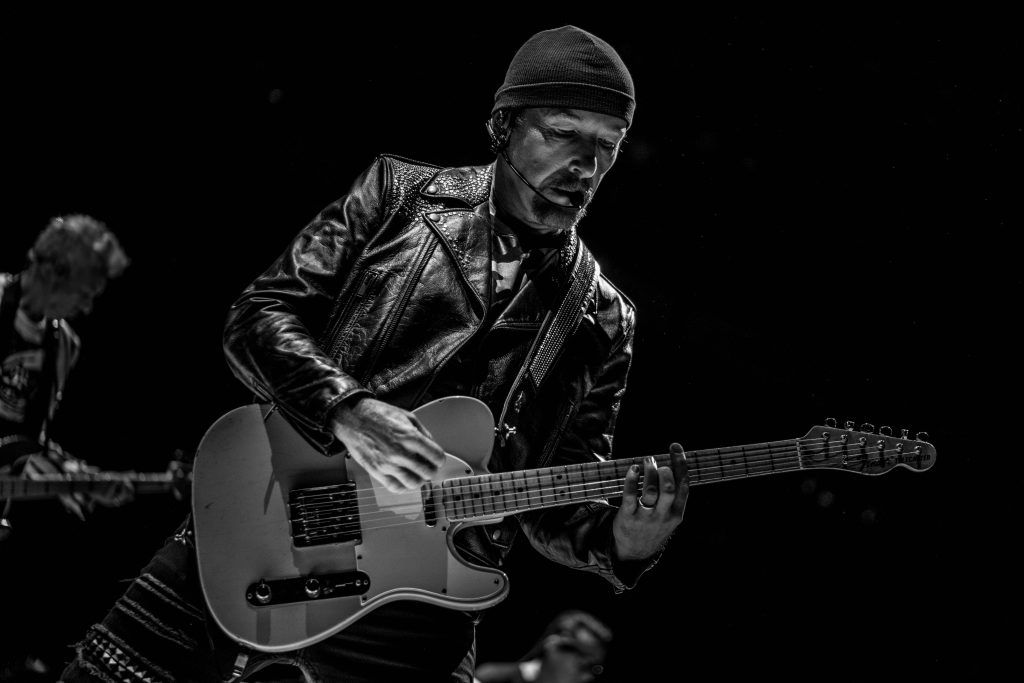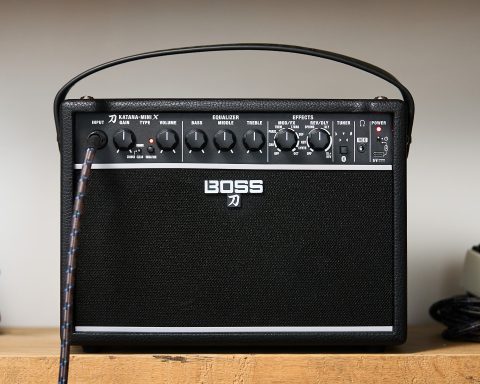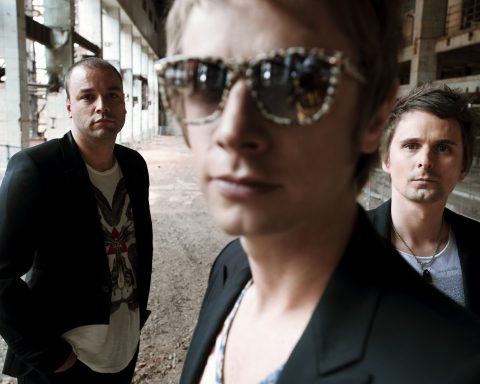U2 had already established itself as one of the world’s biggest bands when preparing to record its fifth album. But that release, The Joshua Tree, would make them one of the most important acts in history. Littered with classics like “With or Without You,” “I Still Haven’t Found What I’m Looking For,” and “Bullet The Blue Sky,” it remains an undisputed masterpiece. And it all begins with one of the most iconic guitar sounds ever recorded: the delay-drenched rhythmic pulse of “Where the Streets Have No Name.” U2 wasn’t a band anymore, they were an institution, and The Edge was a guitar god.
About the Song
“Where the Streets Have No Name,” the opening track on The Joshua Tree, instantly captures the listener’s ear with The Edge’s revolutionary use of dotted eighth delay. And that makes perfect sense, as the effect inspired the entire song. In fact, in the documentary It Might Get Loud, we join The Edge as he listens to his original demos—including Bono calling out time in the background. It becomes apparent that The Edge knew he was on to something special from the start.
Breaking It Down
What separates The Edge from other guitarists is his ability to get the most out of the fewest notes. “Where the Streets Have No Name” is a perfect example. Nearly every guitar tone throughout is simply a Strat on the bridge pickup, a clean AC-style amp tone, and those awe-inspiring delays. While never straying from the song’s trademark rhythm, The Edge often only hits a few strings at once, letting the bass dictate the song’s harmony.
"What separates The Edge from other guitarists is his ability to get the most out of the
fewest notes."
That harmony revolves around a D major chord progression in 6/4 time. Simple enough. The trick to nailing the performance is a relentless 16th-note strumming pattern accentuated by the clear-sounding digital delay set to a dotted eighth. As The Edge points out, synching the strumming and delay repeats with the rest of the band is critical. “If I’m not playing the right tempo, you get a totally different result. The two work off each other.”

Learn The Licks
Marty’s Music channel is an excellent resource for learning the ins and outs of this classic slice of the electric guitar canon. He walks viewers through each section of the song and the multiple guitar layers throughout. Using a BOSS Katana patch, the YouTube maestro explains the delay techniques that turn a single Katana into a whole army of guitar tones.
"The trick to nailing the performance is a relentless 16th-note strumming pattern accentuated by the clear-sounding digital delay set to a dotted eighth."
One of the most eye-opening elements of the video is when Marty removes the delay effect from the signal chain. The guitar parts reveal themselves as exceedingly straightforward. We quickly notice how vital The Edge’s groundbreaking use of effects was and how masterfully he crafted the perfect elements for each song.
DOWNLOAD
"Nameless Streets" Patch for BOSS Katana
- In the style of “Where the Streets Have No Name” by U2
- Uses dual delays








